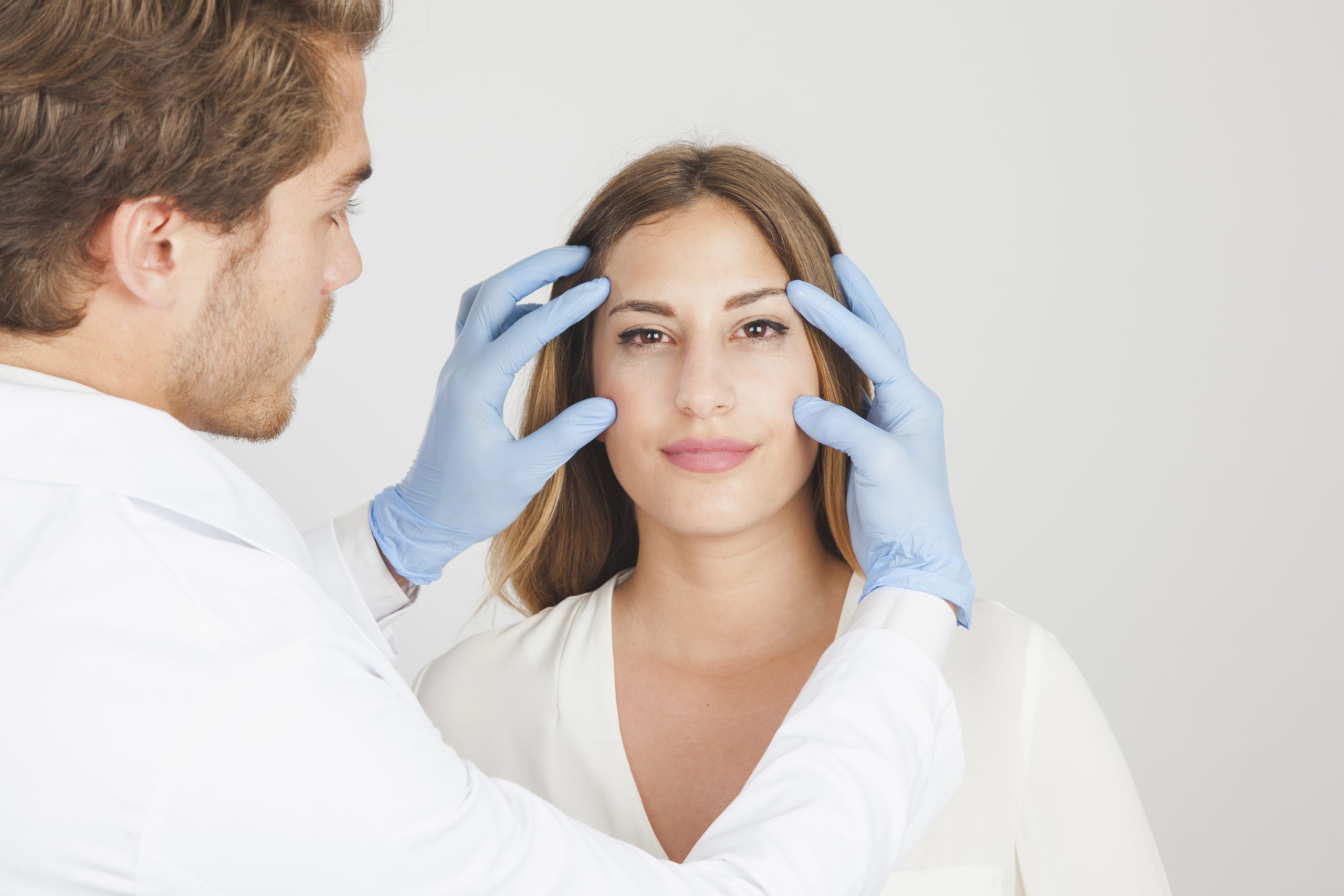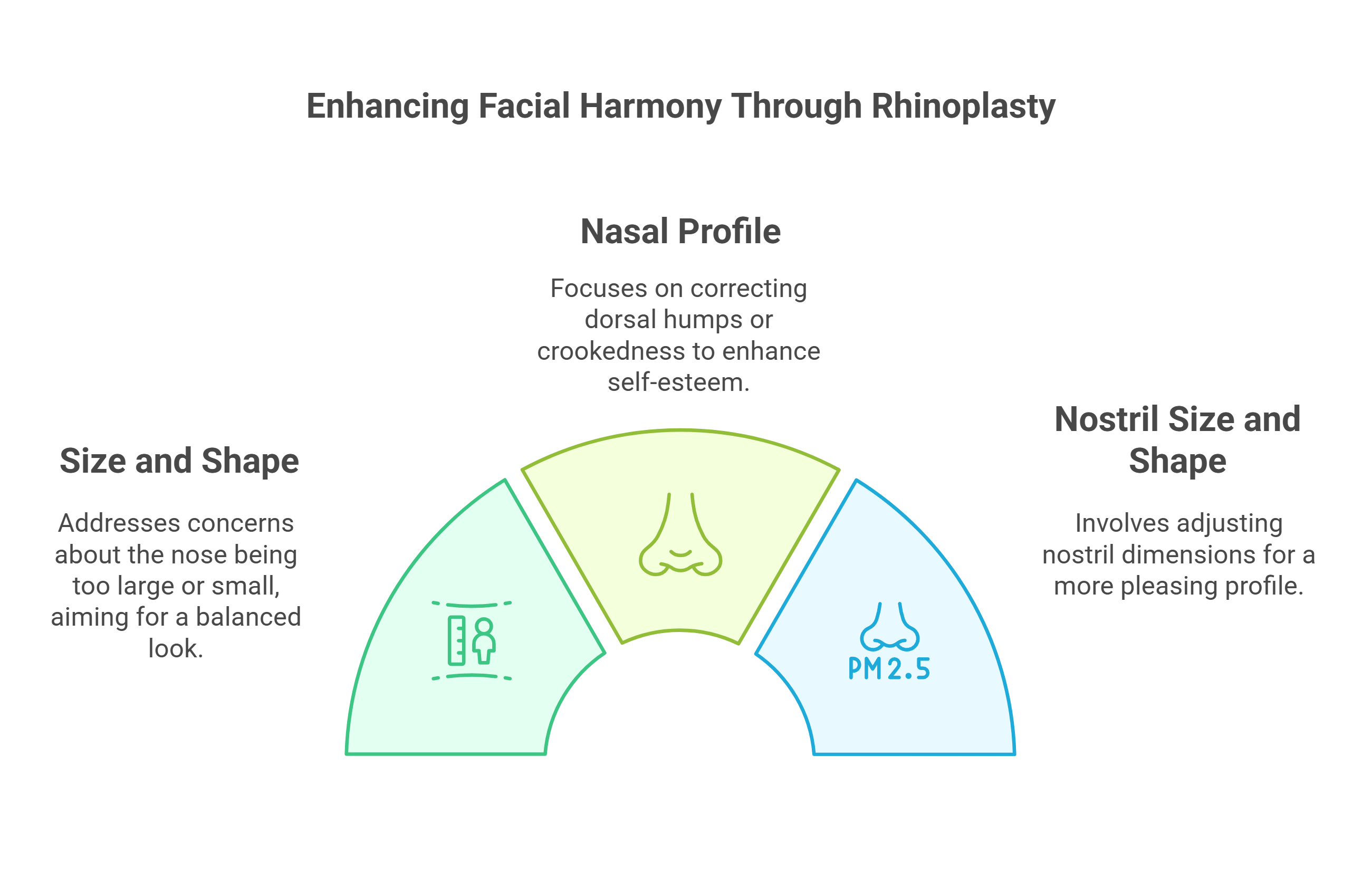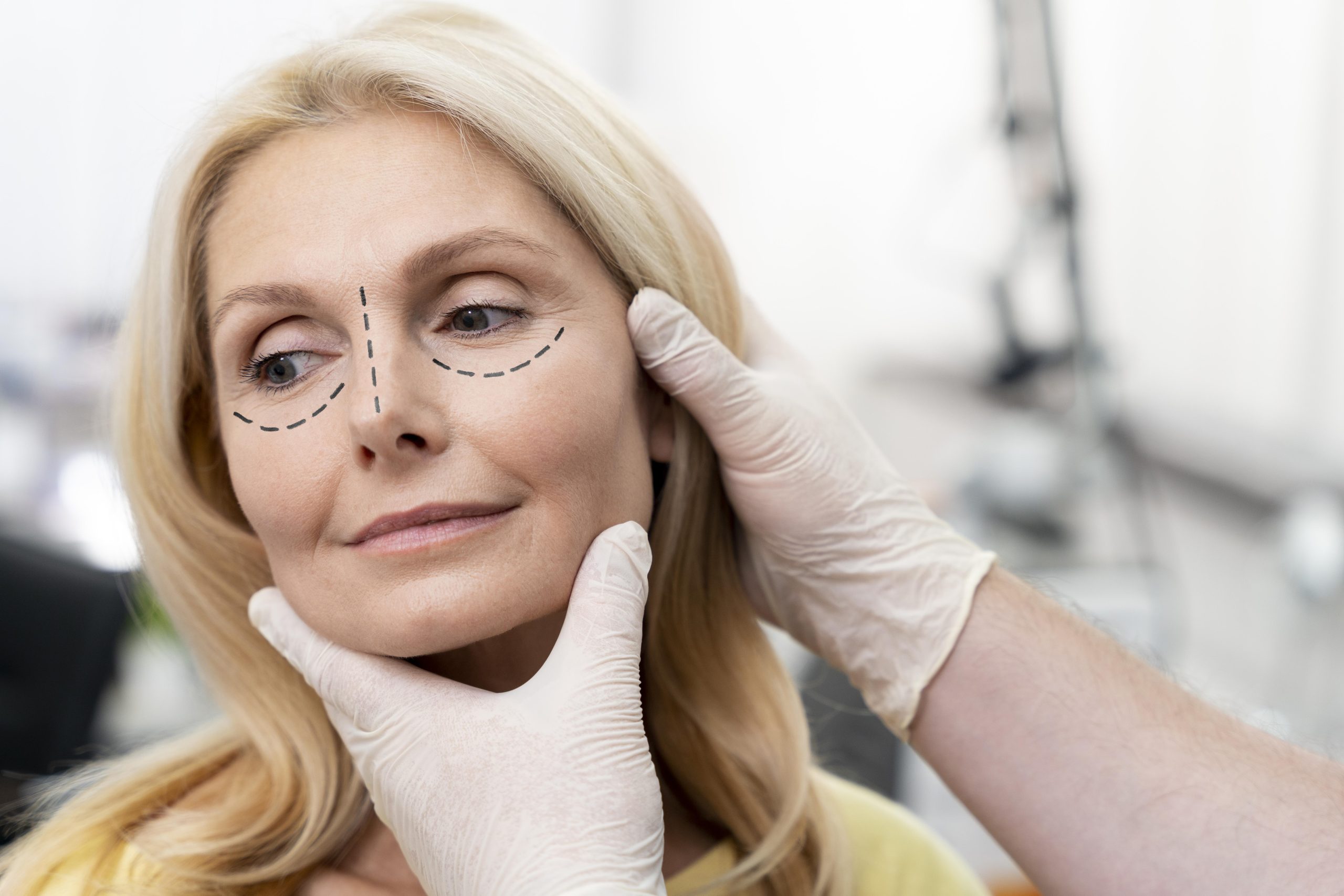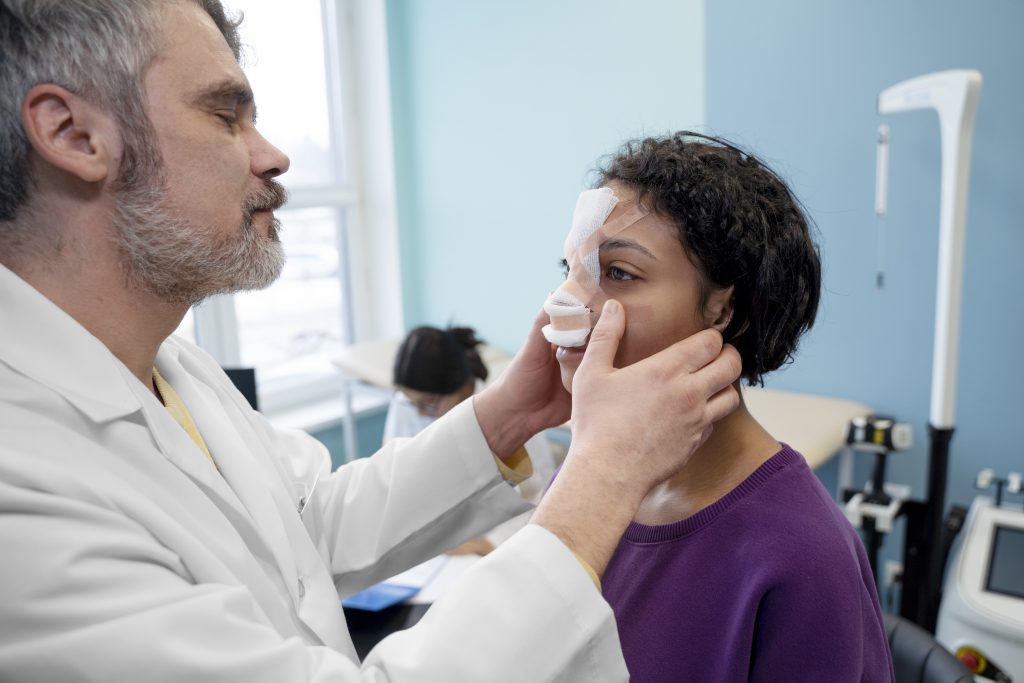Rhinoplasty, often referred to as a nose job, is a popular surgical procedure aimed at reshaping the nose for aesthetic or functional purposes. Understanding the ins and outs of rhinoplasty can help you make informed decisions about the procedure.
In this article, we will explore what rhinoplasty entails, the different types available, and what to expect during and after the surgery.
Key Takeaways
- Rhinoplasty is a surgical procedure to alter the shape or function of the nose.
- There are various types of rhinoplasty, including cosmetic and functional options.
- The procedure involves careful planning and consultation with a qualified surgeon.
- Recovery time can vary, with most patients returning to normal activities within a few weeks.
- Non-surgical alternatives exist for those seeking less invasive options.
Understanding Rhinoplasty

Definition and Purpose
In simple terms, rhinoplasty is a surgery to reshape your nose. The main goal can be to change how your nose looks, help you breathe better, or both. It’s pretty common, and people get it done for all sorts of reasons.
The upper part of your nose is bone, and the lower part is cartilage, and rhinoplasty can change either or both, along with the skin.
Types of Rhinoplasty
There are actually a few different kinds of rhinoplasty, depending on what you’re trying to achieve. It’s not just one-size-fits-all, you know?
- Cosmetic Rhinoplasty: This is the go-to option for those looking to enhance the shape, size, or symmetry of their nose. Cosmetic rhinoplasty can refine your nose to better balance your facial features, giving you a more harmonious look.
- Non-Surgical Rhinoplasty (Filler Rhinoplasty): For those who want a subtle enhancement without surgery, non-surgical rhinoplasty uses dermal fillers to reshape the nose. It’s a temporary solution, typically lasting 6-18 months, and is great for smoothing bumps or creating a more refined nasal bridge.
- Secondary Rhinoplasty (Revision Rhinoplasty): Sometimes, a first rhinoplasty doesn’t go as planned, or complications arise. A secondary rhinoplasty corrects issues from a previous surgery, whether aesthetic or functional. Since revision procedures are more complex, they require a highly skilled surgeon.
- Suture Lift Rhinoplasty: A newer, minimally invasive technique, suture lift rhinoplasty involves strategic sutures (stitches) to subtly lift and reshape the nose without breaking nasal structures. It’s a quicker recovery option for those seeking minor improvements.
- Ethnic Rhinoplasty: Ethnic rhinoplasty is tailored for patients of non-Caucasian backgrounds, preserving their natural ethnic characteristics while enhancing the nose’s structure. Techniques vary depending on facial anatomy and cultural aesthetics, making this a highly personalized procedure.
- Septoplasty: While not technically a rhinoplasty, septoplasty is often performed alongside it. This procedure corrects a deviated septum, which can improve airflow and resolve breathing difficulties. Unlike cosmetic rhinoplasty, its goal is functional rather than aesthetic.
Common Reasons for Rhinoplasty
Why do people get rhinoplasty? Loads of reasons, really. It’s not always about looks, though that’s a big part for some. Here’s a few:
- To change the size or shape of their nose.
- To improve their facial appearance.
- To correct structural problems, like a deviated septum.
- To improve breathing.
The Rhinoplasty Procedure
Consultation and Planning
The first step is always a consultation. It’s more than just a chat; it’s where you and your surgeon get on the same page. They’ll look at your nose, inside and out, and ask about your medical history and what you’re hoping to achieve.
This is your chance to be really clear about what you want. They might even take photos or use computer imaging to show you potential results. It’s all about making sure everyone has realistic expectations.
Surgical Techniques
There are a couple of main ways a surgeon can do a rhinoplasty: open or closed. In an open rhinoplasty, a small cut is made across the columella (the bit between your nostrils). This gives the surgeon a better view and more access to reshape the nose.
In a closed rhinoplasty, all the cuts are made inside the nose. It really depends on what needs to be done. The surgeon might reshape bone, cartilage, or both. Sometimes, they might even need to add cartilage, which can be taken from your septum, ear, or even rib. It sounds intense, but it’s all about getting the best result.
Recovery Process
Now comes the recovery. Expect some swelling and bruising – it’s normal. You’ll probably have a splint on your nose for about a week to protect it. Painkillers can help with any discomfort. It’s important to take it easy for the first week or two.
Avoid strenuous activities and try to sleep with your head elevated. Most of the swelling will go down in a few weeks, but it can take up to a year to see the final result. Patience is key!
Honestly, the recovery isn’t a walk in the park, but it’s manageable. Just follow your surgeon’s instructions, and you’ll be fine. And remember, the end result is worth it!
Benefits of Rhinoplasty

Rhinoplasty, or a nose job, isn’t just about looks, though that’s a big part of it for many. It can actually make a real difference in your life, both in how you see yourself and how well you breathe. It’s a pretty big decision, but the potential upsides are worth considering.
Aesthetic Improvements
Okay, let’s be honest, this is often the main reason people consider rhinoplasty. It’s about getting a nose that fits your face better. Maybe you’ve always felt your nose was too big, too wide, or had a bump that bothered you.
Rhinoplasty can reshape the nose, making it more symmetrical and balanced with your other features. It’s not about chasing perfection, but about achieving a look that makes you feel more confident and comfortable in your own skin. It’s like finally finding the right frame for a picture – suddenly, everything just looks right.
Functional Enhancements
It’s not all about aesthetics, you know. Sometimes, rhinoplasty is about fixing things that aren’t working properly. A deviated septum, for example, can make it really hard to breathe. Septoplasty can correct these structural issues, opening up your airways and making it easier to breathe.
Think about it – better sleep, improved athletic performance, and just generally feeling less stuffy all the time. That’s a pretty big deal.
Boosting Self-Confidence
This one’s a bit harder to quantify, but it’s super important. If you’ve been self-conscious about your nose for years, rhinoplasty can give you a real boost in self-esteem. When you feel good about how you look, it affects everything – your relationships, your career, and just your overall outlook on life.
It’s not about vanity; it’s about feeling comfortable and confident in your own skin. And honestly, that’s priceless. It’s like finally being able to stop worrying about something that’s been bugging you for ages, and just getting on with enjoying your life.
Risks and Considerations
Like any surgery, it’s not without its potential downsides. Let’s have a frank chat about the risks and what you should keep in mind.
Potential Complications
Okay, so what could possibly go wrong? Well, with any major surgery, there’s a risk of bleeding, infection, or a bad reaction to the anaesthetic. But rhinoplasty has its own specific things to watch out for. You might have trouble breathing through your nose afterwards, or experience some permanent numbness around the area.
There’s also the chance of unevenness, pain, discoloration, or swelling that hangs around longer than you’d like. Scarring is a possibility, and in rare cases, a hole can develop in the septum (that’s the wall between your nostrils). And sometimes, you might need another surgery to tweak things.
Here’s a quick rundown:
- Infection
- Nosebleeds
- Breathing difficulties
- Altered sense of smell
Realistic Expectations
This is a big one. It’s super important to have realistic expectations. Rhinoplasty can do amazing things, but it’s not magic. You need to think about what you really want to achieve and have an open chat with your surgeon about whether it’s actually possible. Don’t go in expecting to look like someone else entirely.
The goal is to enhance your natural features, not create a completely new face. It’s about improving what you’ve already got.
It’s easy to get caught up in the before-and-after photos, but remember that everyone’s different. Your anatomy, skin type, and healing process all play a role in the final result. So, focus on what’s achievable for you, not someone else.
Choosing the Right Surgeon
This is probably the most important thing of all. Choosing experienced surgeon can make or break your rhinoplasty experience. You want someone who’s not only skilled and experienced but also someone you trust and feel comfortable talking to. Do your research, check their credentials, and read reviews. Don’t be afraid to ask lots of questions during the consultation. A good surgeon will be happy to answer them and will be honest about the potential risks and benefits. Look for someone who specialises in rhinoplasty and has a good track record. Trust your gut – if something doesn’t feel right, walk away.
Non-Surgical Alternatives
Thinking about changing the shape of your nose but not keen on surgery? You’re in luck! There are some non-surgical options available that might just do the trick. They’re generally quicker, less invasive, and involve less downtime than a full rhinoplasty. Let’s have a look at what’s on offer.
Dermal Fillers
Dermal fillers, often made from hyaluronic acid, can be injected into the nose to smooth out bumps, lift the tip, or add volume to certain areas. It’s like sculpting with a syringe! The great thing is that the results are visible almost immediately, and the procedure itself is relatively quick.
However, it’s important to remember that fillers are temporary, typically lasting from six months to two years, depending on the type of filler used and how your body metabolises it. Also, fillers are best for adding volume and smoothing contours, not for reducing the size of the nose.
Suture Lift Rhinoplasty
Suture lift rhinoplasty is a minimally invasive procedure that uses special sutures to reshape the nose. It’s a good option if you’re looking for subtle changes, like lifting the nasal tip or refining the bridge.
Here’s what you should know:
- It involves inserting sutures under the skin to lift and reshape the nose.
- There are no incisions, so there’s minimal scarring.
- The results are less dramatic than with traditional rhinoplasty.
- It’s a quicker procedure with less downtime.
Suture lift rhinoplasty is a good middle ground for those who want more than fillers can offer but aren’t ready for surgery. It’s important to have realistic expectations and understand that the results are not permanent.
Comparing Results
Choosing between surgical and non-surgical rhinoplasty really boils down to your goals and expectations. Surgical rhinoplasty offers permanent and more dramatic changes, but it comes with a longer recovery and higher risks. Non-surgical options, on the other hand, are less invasive and offer quicker results, but they’re temporary and best suited for minor adjustments.
Here’s a quick comparison:
| Feature | Surgical Rhinoplasty | Non-Surgical Rhinoplasty (Fillers) | Non-Surgical Rhinoplasty (Suture Lift) |
|---|---|---|---|
| Permanence | Permanent | Temporary (6 months – 2 years) | Semi-Permanent |
| Downtime | Several weeks | Minimal (few days) | Minimal |
| Degree of Change | Significant | Subtle | Moderate |
| Invasiveness | High | Low | Low |
| Cost | Higher | Lower | Moderate |
| Best For | Major reshaping | Smoothing bumps, adding volume | Lifting tip, refining bridge |
Ultimately, the best approach is to have a consultation with a qualified practitioner who can assess your individual needs and recommend the most suitable option for you. They’ll be able to talk you through the pros and cons of each procedure and help you make an informed decision.
Post-Operative Care
The surgery is just one part of the journey. Proper aftercare is vital for a smooth recovery and to achieve the best possible results. It might seem a bit daunting at first, but with the right information and a bit of patience, you’ll be well on your way to a successful outcome. Let’s break down what you need to know.
Managing Discomfort
There will be some discomfort. Pain management is key in the initial days following your rhinoplasty. Your surgeon will likely prescribe pain medication, so take it as directed.
Don’t try to tough it out; staying ahead of the pain will make your recovery much more comfortable. Besides medication, here are a few other things that can help:
- Cold Compresses: Apply cold compresses to your nose and cheeks to reduce swelling and numb the area. Just be sure to protect your skin with a cloth to avoid frostbite.
- Elevate Your Head: Sleeping with your head elevated on a couple of pillows can also help minimise swelling. Think of it as giving gravity a helping hand.
- Rest: Your body needs time to heal, so don’t push yourself. Avoid strenuous activities and get plenty of sleep.
It’s normal to experience some bruising and swelling around your eyes and nose. This should gradually subside over the first couple of weeks. If you notice any signs of infection, such as increased redness, pus, or a high temperature, contact your surgeon immediately.
Follow-Up Appointments
These are really important, so don’t skip them! Your surgeon will want to monitor your progress and make sure everything is healing as it should. Typically, you’ll have a few follow-up appointments in the weeks and months following your surgery. At these appointments, your surgeon may:
- Remove any splints or sutures.
- Assess the healing process.
- Provide further instructions for care.
- Answer any questions you may have.
Long-Term Care
Once the initial recovery period is over, there are still a few things you can do to ensure the best long-term results. Protecting your nose is paramount. Here’s what to keep in mind:
- Sun Protection: Wear sunscreen on your nose to prevent discolouration of the skin.
- Avoid Trauma: Be careful to avoid any bumps or injuries to your nose, especially during sports or other activities.
- Be Patient: It can take up to a year or even longer to see the final results of your rhinoplasty. Swelling can persist for several months, so don’t get discouraged if you don’t see the results you were hoping for right away.
Rhinoplasty for Different Ethnicities

Cultural Considerations
Rhinoplasty isn’t a one-size-fits-all procedure and this is where Ethic Rhinoplasty comes in. What looks balanced and harmonious on one person might not on another. Cultural background plays a big role in what people consider beautiful, and it’s vital that these preferences are respected.
For example, someone of Asian descent might want to maintain a slightly wider nasal bridge, while someone of African descent might want to address a wider nasal base without losing their ethnic identity. It’s all about finding a surgeon who gets this and is willing to listen.
Tailored Techniques
Different ethnicities often have distinct nasal structures. Someone of Middle Eastern descent might have thicker skin and a more pronounced dorsal hump, while someone of European descent might have thinner skin and a more delicate bone structure. Surgeons need to adapt their techniques to suit these differences.
This might involve using specific grafting techniques to support the nasal structure or employing different suturing methods to achieve the desired shape. It’s not just about making a nose smaller; it’s about creating a nose that complements the individual’s other facial features and ethnic background.
Celebrating Diversity
Rhinoplasty should be about enhancing natural beauty, not erasing cultural identity. It’s about helping people feel more confident in their own skin, while still celebrating their heritage.
The goal is to achieve a result that looks natural and harmonious, reflecting the individual’s unique ethnic background. It’s about finding a balance between aesthetic ideals and personal identity, ensuring that the final result is something the patient is truly happy with.
Ultimately, it’s about finding a surgeon who understands this and is committed to providing a personalised approach that respects and celebrates diversity. It’s about empowering individuals to embrace their heritage while achieving their aesthetic goals.
Conclusion
Rhinoplasty can be a transformative procedure for those looking to enhance their appearance or improve their breathing. It’s essential to consult with a qualified surgeon who can guide you through the process. Remember, the goal is to achieve a nose that complements your unique features and boosts your confidence.
If you’re ready to explore your options, here’s a FREE a consultation. Your journey to a more balanced and harmonious look could be just a step away.
Frequently Asked Questions
What exactly is rhinoplasty?
Rhinoplasty, often called a nose job, is a type of surgery that changes the shape and size of your nose. It can be done for cosmetic reasons to improve appearance or for medical reasons to help with breathing.
What are the different types of rhinoplasty?
There are two main types: cosmetic rhinoplasty, which focuses on looks, and functional rhinoplasty, which aims to improve breathing by fixing structural issues.
How long does recovery take after rhinoplasty?
Most people need about one to two weeks to recover from the surgery. After this time, you can usually return to normal activities, but full healing can take several months.
Are there risks involved with rhinoplasty?
As with any surgery, there are risks like bleeding, infection, or complications with anaesthesia. It’s important to discuss these with your surgeon.
Can I have rhinoplasty if I'm still growing?
Surgeons typically recommend waiting until your facial bones have fully developed, which usually happens in late teens, before having rhinoplasty.
What should I expect during the consultation?
During your consultation, the surgeon will discuss your goals, examine your nose, and explain the procedure, including what to expect before, during, and after surgery.





